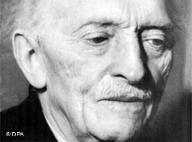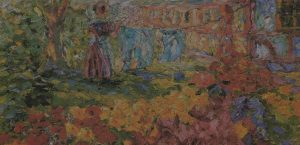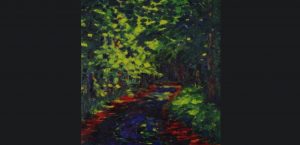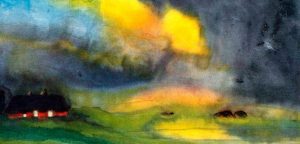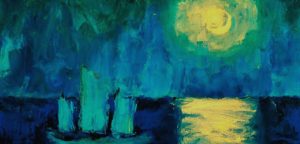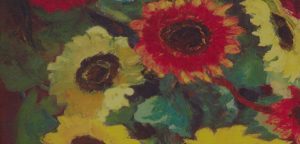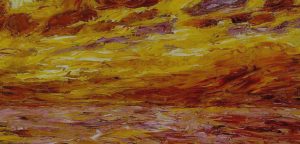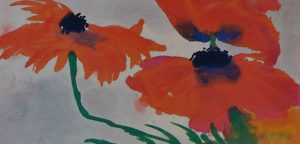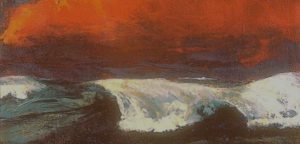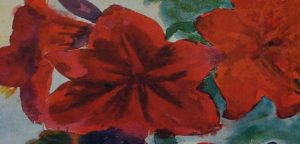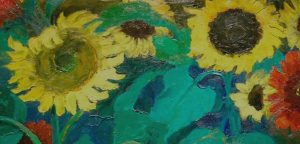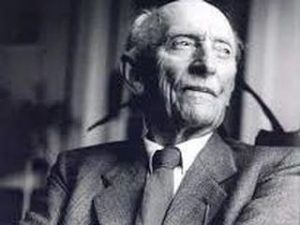Emil Nolde was born on the 7th of August in 1867 in the village of Nolde, Prussia (now Denmark).
1867 - 1956
Emil Nolde
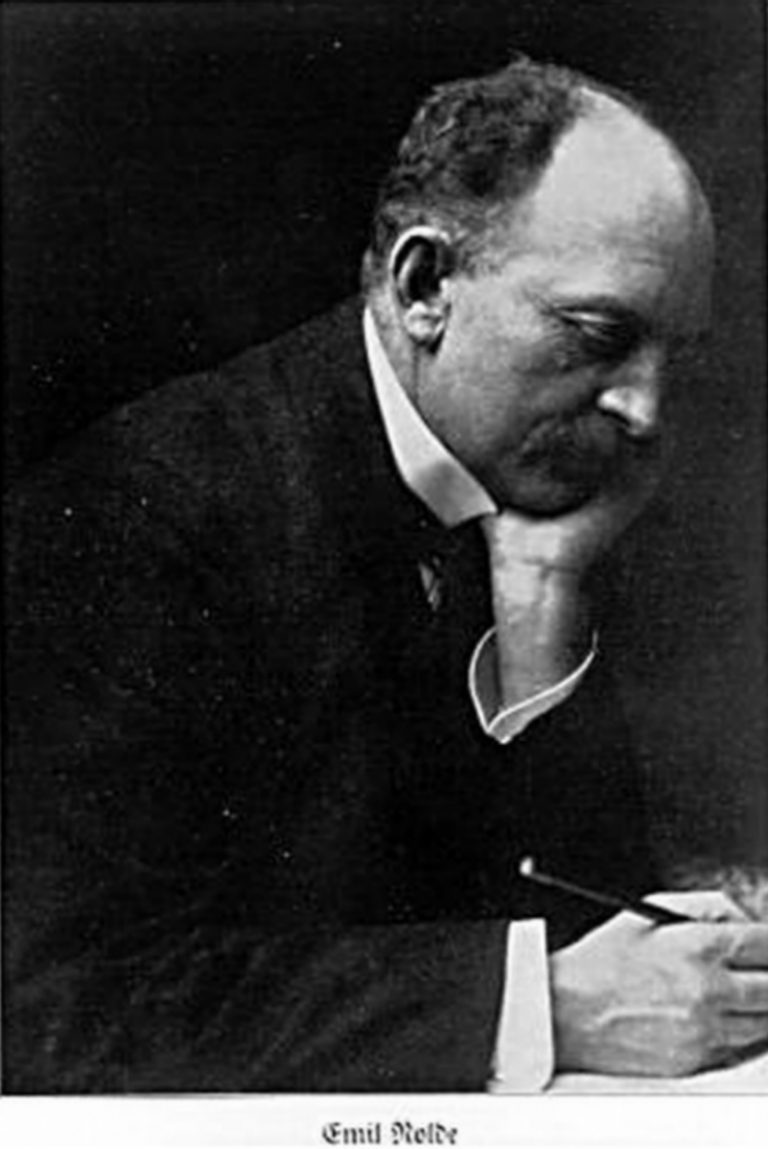
description
A German artist, who had Danish citizenship. One of the leading Expressionist artists and one of the greatest watercolorists of the 20th century.
He was the fourth son, of five children born into a poor family of farmer Niels Hansen, a northern frieze by nationality, which Emil often mentioned. With the transfer of the territory of Denmark, he obtained the citizenship of this country, which he always kept. He attended a German speaking school, worked hard from childhood. He studied carving and painting at the Flensburg School of Arts and Crafts. Took part in the restoration of the altar of the Bruggemans (Schleswig Cathedral); made an introductory and creative trip to Munich, an ancient city of Karlsruhe and Berlin. He worked at the Berlin Furniture Factory as a carver. In the 1890s, he created a series of grotesque images of mountain peaks (“mountain postcards”), the financial success of which allowed him to become a freelance artist.
Although E. Nolde was a member of the leading avant-garde groups “Bridge” (Die Brücke), Blue Rider (Der Blaue Reiter), Berlin Secession, he did not like the very name “expressionism” and remained “a lonely artist”. He was elected an honorary member of several European academies and universities. More than a thousand paintings of the artist were arrested by the Nazis, he was denied the right to work, about three thousand paintings were broken during the bombing of Berlin. The museum of the artist was opened in Seebühl; his life is described in the book “German lesson” by Siegfried Lentz.
Key ideas:
– For the son of a poor farmer, Emil Hanse Hansen, who called himself Nolde after the name of his native village, painting became the only means of self-expression and liberation from perpetual doubts, and sometimes the ability to survive. If you are looking for the most characteristic representative of Expressionism and, at the same time, an author that is the most devoted to the style, this is E. Nolde – an artist with an amazing power of experience and rare openness in expressing his feelings.
– The reduction and even a certain harshness of his style differ the paintings related to the theme of the “big city”- it is common to all Expressionists. Though, while the themes chosen by his colleagues are socially specific, the world of Nolde is phantasmagoric and low, like Hamburg with its wandering couples and yellow-faced Chinese sailors.
– The work of the artist in the mature period is saturated with religious expressiveness. He said, “The instinct is ten times more important than knowledge.”
– In an effort to convey the supersensible knowledge of the only truth given to the author, Nolde used color, which became the main expressive means of the master, forever and for everything. This is clearly seen in the pictures of “distant countries”. His “Papuan boys” with slightly tangled bodies, the Alexandrian sailors with strangely significant faces, rampantly celebrating something, are attractive and catchy. At the same time, severe Christianity and unbridled paganism are not opposed, but are a demonstration of the intense experience of the moment of life.
– The nature of Nolde is also colorful, although not decorative; it does not have any cheerful and light sense of the world, though, in the landscapes, there is light that seems to be emitted from inside of the painting, by the spots of the paint. This is why the pictures of the nature, dictated by natural impressions, did not become “portraits”. For example, the “Autumn Sea”, painted 20 times in 1911, does not express various atmospheric conditions, but reflects the author’s attempts to find the equinox between the unchanging spirit of nature and the state of the soul of the person that captures it.
1867
1898
1906
1909 - 1912
1913 - 1915
1916 - 1924
1927 - 1934
1937
1941
1944
1945 - 1950
1956
The birth of the artist
Rejected by the Munich Academy
Rejected by the Munich Academy, he studied at the Friedrich Fehr painting schools, and then was a student of Höltzel in Dachau. He did not attend the Academy of Julian in Paris for a long time and attended classes at the Louvre. For the first exhibition in 1902, he took a pseudonym, using the name of his native village, wrote mostly lyrical landscapes; married Danish actress Ada Vilstrup.
“Bridge”
Became a member of the art group “Bridge”, where his comrades were E. Kirchner, O. Muller and others. An important acquaintance with E. Munch took place.
Entered the association “Berlin Secession”
Entered the association “Berlin Secession” got carried away with religious themes. The first success came with expositions in Hamburg, Essen, Hagen. During this period, he painted scenes of the nightlife of Berlin, where his wife, an actress, was on tour. He painted the cycles “Autumn Sea” (20 works) and “Life of Christ” (9 parts).
88 works
Traveled as a member of the expedition of the imperial colonial agency around the southern hemisphere. The result was 88 works, including paintings, reflecting the life and customs of the population in different places.
Moved with his family to Utenvarf
Moved with his family to Utenvarf, near the native village of Nolde; in 1919, he created a series of fantastic watercolors, became a member of the Arbeitrat Für Kunst in Berlin. Negatively perceived the struggle for the establishment of new German-Danish borders: considering himself a German, he took Danish citizenship. Traveled to Paris, to England, Spain, visited Zurich, Venice, Vienna; built a house in the village of Seebühl on German territory. The monograph of M. Sauerlant about the artist was published.
In Dresden, a jubilee exhibition was organized for the 60th anniversary of the artist
In Dresden, a jubilee exhibition was organized for the 60th anniversary of the artist; it was then presented in Hamburg, Kiel, Essen and Wiesbaden. Christian-Albrecht University of Kiel Honored him with an honorary doctorate in painting. The works were published in the second volume of the Schiefler catalog. The master became a member of the Prussian Academy of Arts. Joined the National Socialist Workers’ Organization.
1052 works were withdrawn from German museums as “degenerative”
1052 works were withdrawn from German museums as “degenerative”. Thanks to the connections, a small part was managed to be picked up and ensured that the paintings ceased to be shown at the exhibitions “disgracing nation”.
Was forbidden to work and buy paints and canvases
Was forbidden to work and buy paints and canvases. Having retired in Zeebyule, secretly created approx. 1300 small watercolors, buried them in the ground, calling them “unwritten paintings”.
The Berlin apartment of Nolde was destroyed by bombs
The Berlin apartment of Nolde was destroyed by bombs, where about 3000 of his works and the works of P. Klee, V. Kandinsky, O. Kokoshka, L. Feininger, E. Jozefson were destroyed.
The artist received the recognition of the general public
The artist received the recognition of the general public. Numerous exhibitions of his works were held. He was awarded numerous prizes and awards: the Medal of the City of Cologne (1949), the prizes of the two Venice Biennale and the Order of Merit.
The death
The artist died on the 12th of April in 1956 in Seebüle, Germany.

